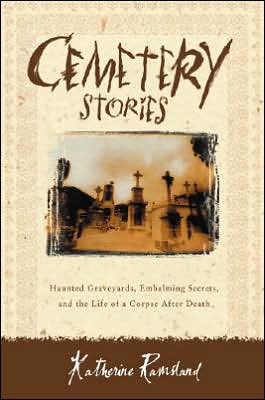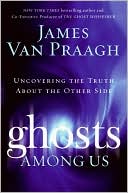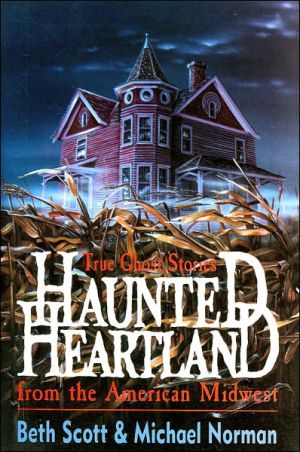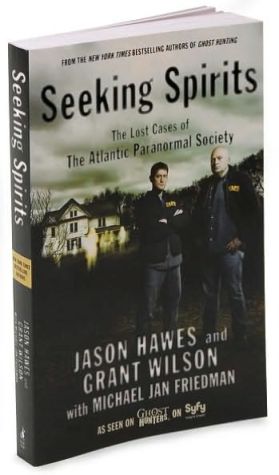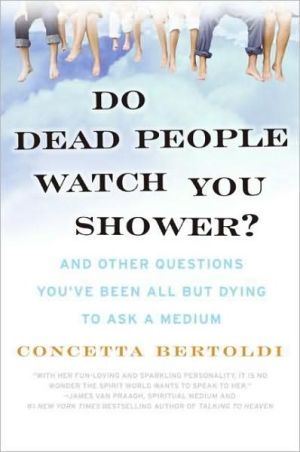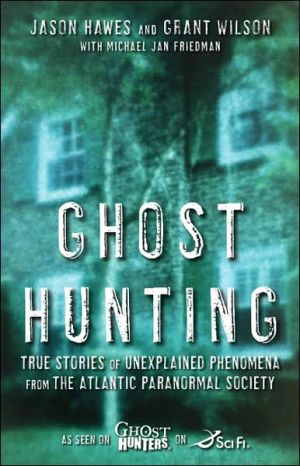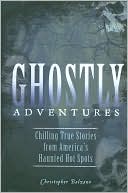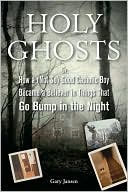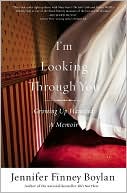Cemetery Stories: Haunted Graveyards, Embalming Secrets, and the Life of a Corpse After Death
Never look at a grave the same way again\ Admit it: You're fascinated by cemeteries. We all die, and for most of us, a cemetery is our final resting place. But how many people really know what goes on inside, around, and beyond them?\ Enter the world of the dead as Katherine Ramsland talks to mortuary assistants, gravediggers, funeral home owners, and more, and find out about:\ \ Stitching and cosmetic secrets used on mutilated bodies\ Embalmers who do more than just embalm\ The rising...
Search in google:
Bestselling author of The Vampire Collection with Anne Rice, Katherine Ramsland goes undercover and has conversations with mortuary assistants, gravediggers, funeral home owners, and other so that readers can delve into the fascinating and often morbid world of cemeteries. From the moment a hearse gets called to embalmings to putting bodies in the ground, Cemetery Stories gathers funny, strange, and often disturbing tales from cemeteries—and other places of the dead—all over the world.Included in this book are stories about:Embalmers who have sex with the bodies they work onTesting practices on corpses performed at a forensics compound called The Body FarmA man who awoke in his grave, clawed his way out, and attended his own funeralAn undertaker who explains his stitching and cosmetic secrets on a mutilated bodyThe cemetery established for slaves freed by way of the Underground RailroadThe son of Satan, who has a small but prominent burial site in a small town in Illinois Publishers Weekly The recent success of HBO's funeral home comedy Six Feet Under proves the power of the macabre over public imagination. "[A]mused, disturbed, and delighted by the range of human behavior surrounding the subject of death," Ramsland (Ghost, Forecasts, Aug. 20; etc.) undertook a pop-anthropological survey of "cemetery culture" by interviewing graveyard caretakers, "death-care" consultants, funeral directors, grave diggers, monument dealers and mortuary assistants. This rambling, anecdotal account traces burial traditions such as embalming, cremation (30% of all funerals), corpse preparation, restorative techniques, cadaver cosmetics and unconventional funerals like the one attended by the deceased's fellow nudists. At Houston's National Museum of Funeral History and the annual National Funeral Directors Association's convention, Ramsland, a Rutgers professor, learns about mortuary schools and entrepreneurial schemes like hologram tombstones, the $65,000 mummification procedure and cemetery kiosks with touch-screen biographies of the deceased. Along with instructions on gravestone rubbing, artistic grave markers and unusual epitaphs, the book introduces "taphophiles," who visit cemeteries as a hobby. The book's closing section recounts ghastly tales of ghouls, corpse abuse, necrophilia and people buried alive, and fascinating interviews with people who grew up in funeral homes. Although it's "the corpseless soul that inspires the most fear," those with weak stomachs might want to skip the graphic description of autopsy procedures, botched reinterments and adipocere ("body cheese"). A bibliography and list of Web sites provide further resources. (Oct.) Forecast: This should see a brief spikein sales at Halloween (aided by promotion at Grim Rides, an elegant online bookstore specializing in death-related volumes [www.geocities.com/grimrides]. Copyright 2001 Cahners Business Information.
Chapter One\ The Burial Detail\ Sometimes finding a story means being in the right place at the right time, and one day I came across a rare sight. I was walking in the municipal cemetery in the midwestern town where I grew up. All around me were the typical Victorian-era monuments of various sizes, from granite slabs to statues to marble spires. They each marked underground, grass-covered graves that surrounded a solid stone mausoleum right in the center. The old part, once a potter's field, ran up a sloping hill to my left. The oldest stone dates back to 1825.\ What a lot of people don't realize is that in the nineteenth century, townspeople thought nothing of coming to cemeteries like this for picnics because it was a place for exchanging news and gossip while also paying one's respects to the dead. Somehow, solitary family visits to graves eventually eclipsed that tradition, and now many people avoid cemeteries altogether.\ Maybe that's due to superstition or the way we've pushed death from our homes and our thoughts. Many religions believe that ghosts haunt cemeteries, and the ones most likely to be hanging around are those that suffered or those seeking revenge. While some ghosts supposedly haunt the place where they died, others might just as easily be near their bodies, emerging confused and disoriented after the body is buried.\ I once had that notion. As a child cutting through the very cemetery I was presently in, I was sure that if I stepped on someone's grave, a ghost would hitch a ride home with me. I'd spent many sleepless nights believing that I'd committed aspiritual trespass. I was especially nervous about a pair of double wooden doors built into the side of the hill. Something unspeakable had to be locked inside the earth. Just glancing at those doors still filled me with dread, so I quickly walked away.\ I intended to see if anyone I knew had been buried lately. I had a few former friends here already, including the victim of a suicide. I entered by a side gate, and as I rounded a turn on the narrow paved road and came out from behind the mausoleum, I was surprised to see a crew of men dressed in orange uniforms. Then I noticed they were digging a grave!\ I immediately recalled the scene in Hamlet where the gravedigger engages the Danish prince in a battle of wits. He's seen many an elevated person go down into the dirt, he says, causing Hamlet to ponder "to what base uses we may return." I wondered if any of this crew thought about life and death as they prepared the ground for a body.\ Someone operated a backhoe, while a rather formidable man wearing a black blazer stood at the side of the deep hole. As I came closer, I saw two men inside, using shovels to flatten the rich, dark earth. The third worker jumped up and down as if to make it smooth and hard. As he climbed out of the six-foot opening and came over to a building near me, I asked if I could talk to him about what he was doing. He gave me a strange look. Then pointing to the man in black, he said, "Talk to him."\ It turned out that the man in black was a corrections officer, and he was there supervising the other men -- all of them prisoners. It was then that I noticed seven other men dressed in bright orange vests working around the cemetery. One was whipping weeds from a monument, another mowed the lawn, and others were working on the cement foundation on which a grave marker would eventually be placed. The officer told me that the city contracts with the prison to do various jobs, including digging graves.\ "Don't any of them object?" I asked. I mean, you get thrown into prison with no idea that you'd get the cemetery detail. "Some of them must be superstitious."\ "They all object," he said with a grim smile, "but they get over that pretty fast."\ Just then a good-looking guy in a turquoise T-shirt walked up and introduced himself as Dan Bennett, the cemetery's caretaker. He looked to be approximately thirty, and sported a tiny gold loop pierced through one ear. He'd been in the position for over four years, be told me, and "if you don't think too hard about what you're doing, it's okay." Since he does not have regular gravediggers on staff, he has to rely on prisoners. It took about forty-five minutes to an hour, he estimated, to dig a grave. That was quite a change from the days before machinery.\ In the beginning, when someone died, his family or friends did the deed, but eventually gravedigging became a specialized role for someone in a church parish -- often the schoolmaster. That started in the 1500s, and in some places it paid well and became a fairly prestigious job. Digging a grave took from four to eight hours, depending on the ground conditions and the number of diggers involved, because people had discovered that shallow graves allow odors to rise that attract insects and varmints. The gravedigger eventually became the general caretaker, but up until the late nineteenth century, he left the closing of the grave to the pallbearers. Now whoever digs the grave generally finishes the job.\ In the 1950s backhoes came on the scene, considerably reducing the amount of time and effort required, but I found that kind of disappointing. I was hoping to talk to someone who had a lot of time to think about what he was doing as he dug into the ground.\ Although Bennett recalled no real surprises on this job, the man who'd held it before him had had a few accidents. "You have a survey that shows you..."\ Cemetery Stories. Copyright © by Katherine Ramsland. Reprinted by permission of HarperCollins Publishers, Inc. All rights reserved. Available now wherever books are sold.
\ Publishers WeeklyThe recent success of HBO's funeral home comedy Six Feet Under proves the power of the macabre over public imagination. "[A]mused, disturbed, and delighted by the range of human behavior surrounding the subject of death," Ramsland (Ghost, Forecasts, Aug. 20; etc.) undertook a pop-anthropological survey of "cemetery culture" by interviewing graveyard caretakers, "death-care" consultants, funeral directors, grave diggers, monument dealers and mortuary assistants. This rambling, anecdotal account traces burial traditions such as embalming, cremation (30% of all funerals), corpse preparation, restorative techniques, cadaver cosmetics and unconventional funerals like the one attended by the deceased's fellow nudists. At Houston's National Museum of Funeral History and the annual National Funeral Directors Association's convention, Ramsland, a Rutgers professor, learns about mortuary schools and entrepreneurial schemes like hologram tombstones, the $65,000 mummification procedure and cemetery kiosks with touch-screen biographies of the deceased. Along with instructions on gravestone rubbing, artistic grave markers and unusual epitaphs, the book introduces "taphophiles," who visit cemeteries as a hobby. The book's closing section recounts ghastly tales of ghouls, corpse abuse, necrophilia and people buried alive, and fascinating interviews with people who grew up in funeral homes. Although it's "the corpseless soul that inspires the most fear," those with weak stomachs might want to skip the graphic description of autopsy procedures, botched reinterments and adipocere ("body cheese"). A bibliography and list of Web sites provide further resources. (Oct.) Forecast: This should see a brief spikein sales at Halloween (aided by promotion at Grim Rides, an elegant online bookstore specializing in death-related volumes [www.geocities.com/grimrides]. Copyright 2001 Cahners Business Information.\ \
